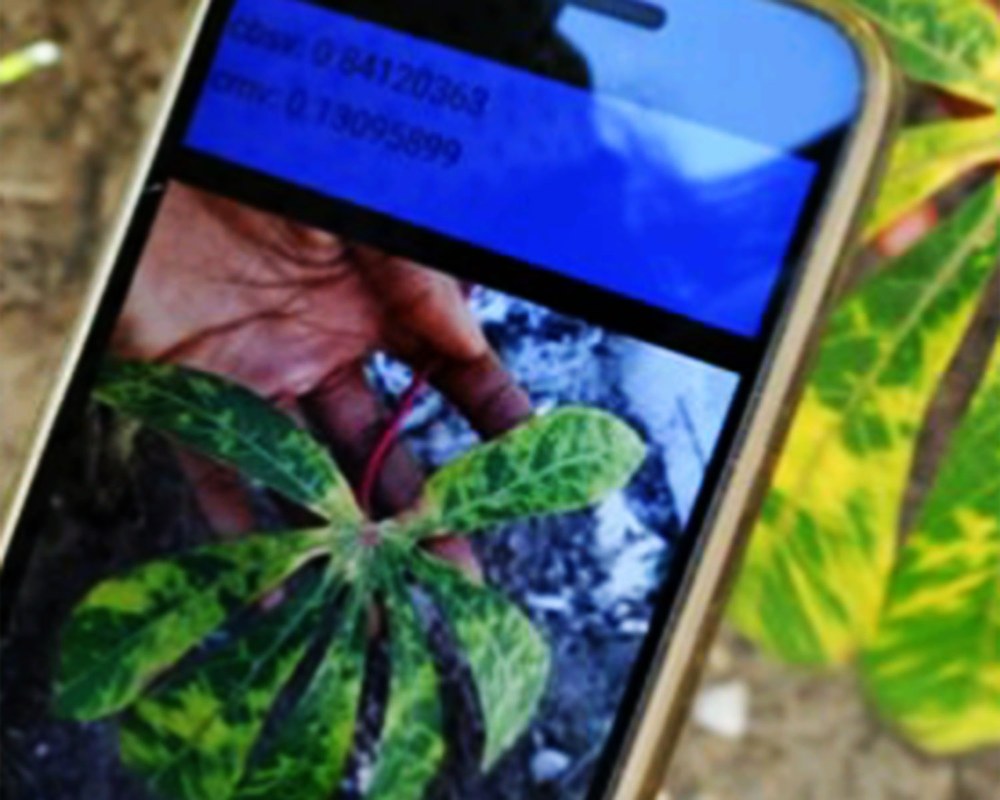This is the eigth short news article written by students, during the professional development class of Spring 2023, about each other's research.

A viral disease on a cassava plant
Student Spotlight: Winnie Onyango
Written by Adam Scherr
It starts with a small insect landing on its host. The parasite attacks with its sucking mouthparts, transferring a deadly virus as it feeds. Before anyone can realize what has happened, it's already too late.
Such is the fate for millions of tons of cassava plants that are killed or heavily weakened by diseases spread via insect pests called whiteflies. The work of Winnie Onyango, a graduate student in the Department of Entomology at Penn State, will analyze the benefit of an artificial intelligence tool that farmers can use to recognize these diseases in their cassava.
At an estimated 415 million tons produced globally every year, cassava is the world's fifth most common staple food crop just behind maize, rice, wheat, and potato1. As an essential food source for many communities in South America, Africa, and Southeast Asia, the small scale farmers who grow cassava far outnumber the extension agents and research technicians who educate and collaborate with growers.
Winnie Onyango seeks to fix this disconnect between farmers and the experts who can help them using a smartphone app called PlantVillage Nuru. "If farmers can rapidly identify diseased plants," Winnie explains, "they can take steps to reduce disease spread, which will help them achieve better crop yields."
To use the free PlantVillage Nuru app, farmers just need to point their phone camera at the cassava leaves where the app will automatically take a few pictures. The pictures will then be scanned by an AI imaging software called Tensorflow to see if they match any of the diseases and pests that the system has been programmed to recognize. After scanning, the app provides farmers with immediate recommendations for handling the disease or pest. The app also allows users to ask questions about disease and pest management directly to experts who provide advice through the app. Onyango’s work focuses on two diseases recognized by distinct symptoms on cassava leaves: cassava mosaic disease (CMD), which causes a creeping pale color in leaves, and cassava brown streak disease (CBSD), which causes yellowing along leaf veins.
CMD is a common viral disease of cassava that causes the plant to produce significantly smaller tubers (the edible part of the plant), which decreases yield and total available food. CBSD is a far more harmful viral disease, since infected plants get a brown rot in all their tubers that makes them entirely inedible. Both viruses are spread from plant to plant by the whiteflies that feed on cassava.
"Viral diseases cannot be cured. You can only prevent [them]," Onyango explains. The central goal of PlantVillage Nuru is to allow farmers to recognize which of their crops contain the virus to avoid using the cuttings from those crops to grow next season's cassava plants. "When you start with clean cuttings, you have totally eliminated the viral disease." Removing diseased plants in a field early in the growing season can also prevent pests, such as whiteflies, from spreading viruses throughout the field. Onyango will use data collected from small scale cassava growers in Kenya to determine if Nuru 1) successfully identifies CMD and CBSD for farmers and 2) leads to meaningful increases in total cassava yield.
Onyango hopes that cassava growers across the world will increase crop yields once they use the app to start every growing season with healthy, virus-free plants. While some believe that artificial intelligence can only spell the end for humanity, Onyango and the PlantVillage Nuru app are using it to get one step closer towards global food security.
- FAOSTAT. Food and Agriculture Organization of the United Nations. Accessed Jan 26, 2023. https://www.fao.org/faostat/en/#home.
Winnie Onyango is a PhD candidate advised by Dr. David Hughes, Dorothy Foehr Huck and J. Lloyd Huck Chair in Global Food Security. Her work is funded by a grant from USAID IL Current Emerging Threats to Crops.

